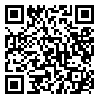Volume 20, Issue 1 (6-2022)
sjsph 2022, 20(1): 57-68 |
Back to browse issues page
Download citation:
BibTeX | RIS | EndNote | Medlars | ProCite | Reference Manager | RefWorks
Send citation to:



BibTeX | RIS | EndNote | Medlars | ProCite | Reference Manager | RefWorks
Send citation to:
Golestani F, Abedi Z, Azizi Z, Gholamnia R. Management of Fire Crisis in Oil Refineries Using Drone Technology:
A Case Study in the Lavan Oil Refinery. sjsph 2022; 20 (1) :57-68
URL: http://sjsph.tums.ac.ir/article-1-6109-en.html
URL: http://sjsph.tums.ac.ir/article-1-6109-en.html
1- 1- MSc. Student, Department of Natural Resources and Environment, Science and Research Branch, Islamic Azad University, Tehran, Iran
2- 2- Ph.D. Assistant Professor, Department of Natural Resources and Environment, Science and Research Branch, Islamic Azad University, Tehran, Iran ,abedi2015@yahoo.com
3- 3- Ph.D. Assistant Professor, Department of Natural Resources and Environment, Science and Research Branch, Islamic Azad University, Tehran, Iran
4- 4- Ph.D. Associate Professor, Department of Health Sciences, School of Health, Safety and Environment, Shahid Beheshti University of Medical Sciences, Tehran, Iran
2- 2- Ph.D. Assistant Professor, Department of Natural Resources and Environment, Science and Research Branch, Islamic Azad University, Tehran, Iran ,
3- 3- Ph.D. Assistant Professor, Department of Natural Resources and Environment, Science and Research Branch, Islamic Azad University, Tehran, Iran
4- 4- Ph.D. Associate Professor, Department of Health Sciences, School of Health, Safety and Environment, Shahid Beheshti University of Medical Sciences, Tehran, Iran
Abstract: (1471 Views)
Background and Aim: Due to the design features, facilities and the presence of crude oil materials or refined products from crude oil, the refining industry is prone to major accidents such as fire and explosions, which cause a lot of damages and losses. On the other hand, due to the development of intelligent technologies and drones (remote-controlled birds) and the widespread use of these technologies in various industries, the use of these new technologies in the oil and gas industry is inevitable. This case study was conducted with the aim of utilizing drone technology in fire crisis management in oil refineries in the Lavan Oil Refinery, Iran.
Materials and Methods: Data were collected using qualitative methods and literature review by combining keywords such as refinery, fire and explosion and drone, as well as holding semi-structured interviews with 15 informed and experienced persons from among refinery personnel. In order to identify internal strengths (S) and weaknesses (W) and external opportunities (O) and threats (T) the gathered data were analyzed using the basic SWOT model.
Results: Analysis of the data show the following strategies to be the results of the external threats and opportunities and internal strengths and weaknesses: Strength/Opportunity (SO), Strength/Threat (ST), Weakness / Opportunity (WO) and Weakness/Threat (WT).
Conclusion: The use of drones for monitoring (finding the location and source of fire), identifying (determining the exact location and extent of the fire), confronting and controlling (relief and rescuing, saving the lives of firefighters, firefighting) in the Iranian oil industry requires making changes in the capacity and levels of technology and the equipment and manpower. Making these changes requires the support of managers and personnel of the oil industry in order to use this new technology and make it operational. In this way, fire crisis management in refineries can be implemented by using drone technology.
Materials and Methods: Data were collected using qualitative methods and literature review by combining keywords such as refinery, fire and explosion and drone, as well as holding semi-structured interviews with 15 informed and experienced persons from among refinery personnel. In order to identify internal strengths (S) and weaknesses (W) and external opportunities (O) and threats (T) the gathered data were analyzed using the basic SWOT model.
Results: Analysis of the data show the following strategies to be the results of the external threats and opportunities and internal strengths and weaknesses: Strength/Opportunity (SO), Strength/Threat (ST), Weakness / Opportunity (WO) and Weakness/Threat (WT).
Conclusion: The use of drones for monitoring (finding the location and source of fire), identifying (determining the exact location and extent of the fire), confronting and controlling (relief and rescuing, saving the lives of firefighters, firefighting) in the Iranian oil industry requires making changes in the capacity and levels of technology and the equipment and manpower. Making these changes requires the support of managers and personnel of the oil industry in order to use this new technology and make it operational. In this way, fire crisis management in refineries can be implemented by using drone technology.
Type of Study: Research |
Subject:
Public Health
Received: 2022/09/7 | Accepted: 2022/06/21 | Published: 2022/06/21
Received: 2022/09/7 | Accepted: 2022/06/21 | Published: 2022/06/21
Send email to the article author
| Rights and permissions | |
 |
This work is licensed under a Creative Commons Attribution-NonCommercial 4.0 International License. |





